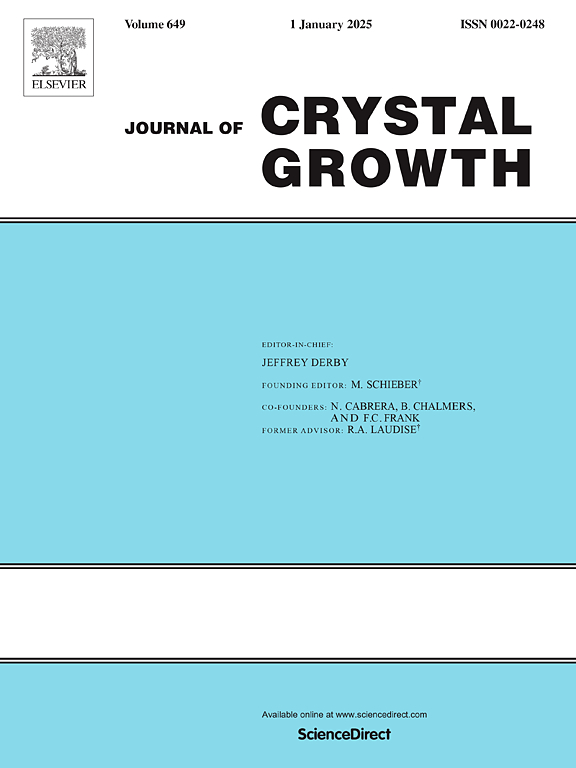深层共晶溶剂制备TiO2纳米粒子及其光催化降解印染废水
IF 2
4区 材料科学
Q3 CRYSTALLOGRAPHY
引用次数: 0
摘要
二氧化钛纳米颗粒(TiO2 NPs)由于其优越的可用性、高光催化活性、卓越的热稳定性和成本效益,在材料科学界引起了相当大的关注。最近,人们对它们在科学研究中的潜在应用越来越感兴趣。因此,开发更高效、可控的制备方法已成为当前研究的重点。本研究使用深度共晶溶剂(DESs)作为溶剂和结构导向剂,为TiO2 NPs的可控合成提供了一种温和环保的工艺。此外,研究了它们在全光谱光源下对染料废水的光催化降解性能。结果表明:在质量比为1:1的PEG-H2O水解溶液中,以质量比为1:10的比例引入TiCl4-DESs,然后在550℃的马弗炉中煅烧,可以得到均匀的球形、分散性好的纯锐钛矿型TiO2 NPs,平均粒径约为14.01 nm。在全光谱光源照射60 min后,亚甲基蓝的去除率达到99.2%。180 min后,罗丹明B和甲基橙的降解率分别为97.0%和80.7%。这些结果表明,DESs的应用促进了TiO2 NPs纳米结构和晶粒尺寸的绿色温和调节,有效提高了其光催化活性。本文章由计算机程序翻译,如有差异,请以英文原文为准。
Controllable preparation of TiO2 nanoparticles using deep eutectic solvents and their photocatalytic degradation of dyeing wastewater
Titanium dioxide nanoparticles (TiO2 NPs) have garnered considerable attention within the materials science community due to their superior availability, high photocatalytic activity, remarkable thermal stability, and cost-effectiveness. Recently, a growing interest has emerged in their potential applications within scientific research. Therefore, the development of more efficient and controllable preparation methods has been concentrated in current studies. This study uses deep eutectic solvents (DESs) as solvents and structure-directing agents to provide a gentle and environmentally friendly process for the controlled synthesis of TiO2 NPs. Furthermore, it examines their photocatalytic degradation performance on dye wastewater under full-spectrum light sources. The findings reveal that by introducing TiCl4-DESs in a mass ratio of 1:10 in a hydrolytic solution of PEG-H2O with a mass ratio of 1:1, and subsequently, calcining the mixture at 550 ℃ in a muffle furnace, uniform spherical pure anatase–type TiO2 NPs with good dispersion and an average particle size of approximately 14.01 nm can be obtained. After 60 min of exposure to a full-spectrum light source, the removal rate of methylene blue reached 99.2 %. After 180 min, the degradation rates of rhodamine B and methyl orange were found to be 97.0 % and 80.7 %, respectively. These results demonstrate that the application of DESs facilitates the green and mild modulation of the nanostructures and grain sizes of TiO2 NPs, effectively enhancing their photocatalytic activity.
求助全文
通过发布文献求助,成功后即可免费获取论文全文。
去求助
来源期刊

Journal of Crystal Growth
化学-晶体学
CiteScore
3.60
自引率
11.10%
发文量
373
审稿时长
65 days
期刊介绍:
The journal offers a common reference and publication source for workers engaged in research on the experimental and theoretical aspects of crystal growth and its applications, e.g. in devices. Experimental and theoretical contributions are published in the following fields: theory of nucleation and growth, molecular kinetics and transport phenomena, crystallization in viscous media such as polymers and glasses; crystal growth of metals, minerals, semiconductors, superconductors, magnetics, inorganic, organic and biological substances in bulk or as thin films; molecular beam epitaxy, chemical vapor deposition, growth of III-V and II-VI and other semiconductors; characterization of single crystals by physical and chemical methods; apparatus, instrumentation and techniques for crystal growth, and purification methods; multilayer heterostructures and their characterisation with an emphasis on crystal growth and epitaxial aspects of electronic materials. A special feature of the journal is the periodic inclusion of proceedings of symposia and conferences on relevant aspects of crystal growth.
 求助内容:
求助内容: 应助结果提醒方式:
应助结果提醒方式:


